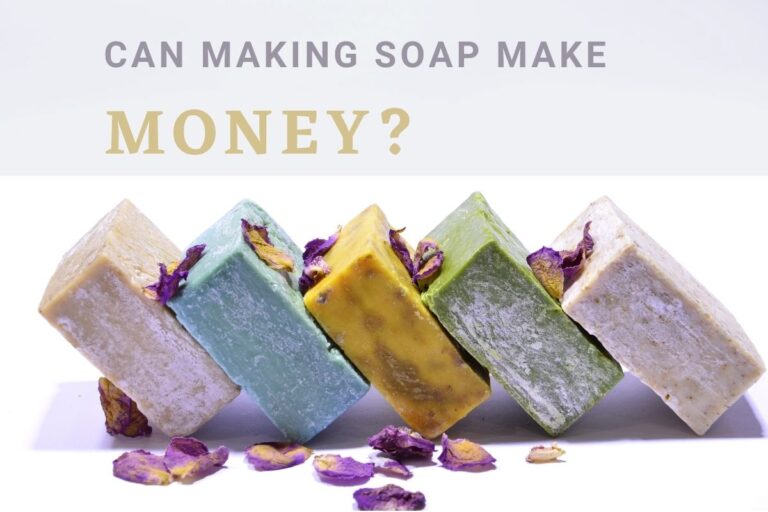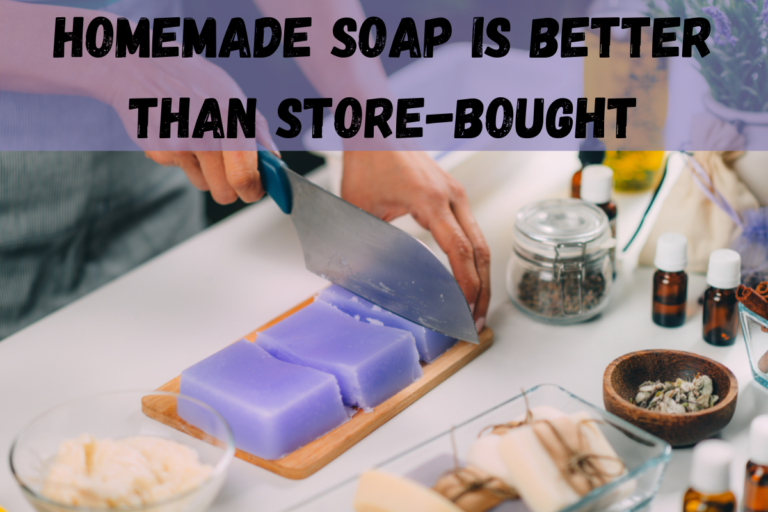Avoiding Slimy Results: Making Homemade Soap
Nobody likes slimy soap. It feels gross to use and looks sloppy on the countertop. So, why does it happen? Luckily there are a few things you can do to avoid this issue in future batches of homemade soap. Find out what they are in this post!
The main reason that your homemade soap may be is that not enough hard oils were added. These are usually the oils you find in coconut butter, castor oil, or even avocado oil, with the closest runner-up for your slimy soap being old, or not enough lye added.
When you do make your milk, you need to be aware of all the reasons that it may turn slimy, with many people not always being aware of the effects of not follow instructions. Many times, just understanding why the soap is slimy is enough to ensure that the next batch won’t be so slimy. The why of a slimy soap is one of the most interesting things about soap creation because of the complex reasons that the soap can be slimy.
5 Most Common Reasons Homemade Soap Goes Slimy
While there are many ways that your soap will become slimy, there are five common mistakes that people do that will quickly make even the best-laid plans of soap and balance into nothing. This is because these mistakes cause the soaps to become slimy long before they had any chance of being successfully created.
These cause a lot of people to lose sight of what they are making and usually encourage people to create soaps that are entirely unusable as they become slimy messes as soon as they are needed. Having these perfectly balanced and ready to be used will ensure that your soaps are almost always perfect and that the mistake does not lie with you, instead, there may be some outside force causing the problems with your soap.
Needs Stirring:
Soap needs to be mixed thoroughly and not doing so can quickly cause the most balanced mixes to be nothing more than a slimy mess. Not being stirred properly is a big cause for many soaps to not be properly set or ready to be cast.
Measurement error:
Even one small measuring mistake will cause your soap to have too much of one thing or the other. Too much essential oil and the other oils aren’t binding, too much lye, and the fat content is too much.
Temperature problems:
When melting everything together the ingredients need to heat to melt together and getting this exactly right as you add each ingredient is vital, otherwise you will have some that are melted together. While other ingredients are burnt by the heat of the mix.
Too much fat:
One of the key things to add into the soap to make sure everything is mixing well is fat, and when you add too much the soap becomes a slimy mess. You need to check the fat content of each ingredient and calculate how they will affect each other.
Inactive Lye:
Old lye or the wrong lye simply will not do when making soap, you need to ensure that the lye you are using is both fresh and ready to be used. Keeping track of your lye and the condition that it is in will be important to make sure your soap turns out perfectly.
The Type of Oil You use Can Make Slimy Soap
The type of oil you are using greatly adds to the total fat content of your soap, not using enough oil with the other ingredients can cause sliminess, or adding too much can cause the sliminess. The most common oils to cause slimy soaps are canola and sunflower oil, these are two oils that are extremely high in fat content and can throw your entire batch out of sync.
Oil tends to react oddly with many ingredients that we have in the world and will usually become slimy if it is not reacting properly with the other things you have in your soap mixture. This is why you need to ensure that the balance is exactly right, as the oil will congeal in weird ways when too much is added during the mixing process.
However, it should be noted that if you do not add enough oil to your mixture there can be pockets created as the oil tries to react, with some parts of the soap having no oil content at all. The other ingredients in the soap will therefore create pockets of unmixed ingredients that become slimy as the soap goes through the curing process.
Once You’ve Got the Slimy Result There is No Going Back
The truth of it is that you won’t know that the soap is going to be slimy until everything is done, only once you have made thousands of bars of soap can you see this intuitively. Once the soap has gone through the curing process and has become completely hardened will you see that it is slimy, and oozing.
Once the soap has reached this stage it cannot be melted down or mixed with other ingredients, not only will you not be able to do this, but you also no longer know the exact ratio of the soap. As the ingredients react to each other during the mixing and melting process so does the ratio change, with the oils and fragrances reacting to each other.
Soap that has already been made won’t dissolve, so once you have slimy soap it’s best to learn from the experience rather than try to fix it. This is why you should try smaller batches when you are still learning a new recipe, or when you are creating your recipe from scratch. A small-batch turning slimy is not as big of a problem as a batch of 100 soap bars turning slimy.
Sweating Soap – What is is?
One of the biggest causes of slimy soap even if all the ingredients are measured to perfection is improper sweating and curing of the soap. This is the process where you have the soap in a dry box or environment where it has a chance to expel moisture, usually, for homemade soap this process lasts about one full month.
During this process, the water and moisture of the oils are drawn out and should evaporate, leaving behind a perfect soap. However, if it is too humid, even just a bit, then the soap will not lose moisture, and after the first time you use the soap, it will become extremely slimy. This slime will not go away and the soap will be unusable.
Even slight moisture in the air can stop the soap from properly sweating, and not waiting long enough can also cause the soap to not sweat properly. This is why you should ensure that you have a dry place to cure the soaps for the time needed, far away from outside air that can change from day to day, and away from bathrooms.
Conclusion
Your soap can turn slimy for a variety of reasons and learning why is all about trial and error until you can instinctively know the right ratios. Making your essential oil soaps can be amazing, and the control you have over the smells and effects of the soap will ensure that you are getting the best from your soaps. This is why you need to learn why your soap reacts in all the strange and odd ways that it does.
Just be sure that your soap molds are ready for the soap as well, soap can be surprisingly sticky!




